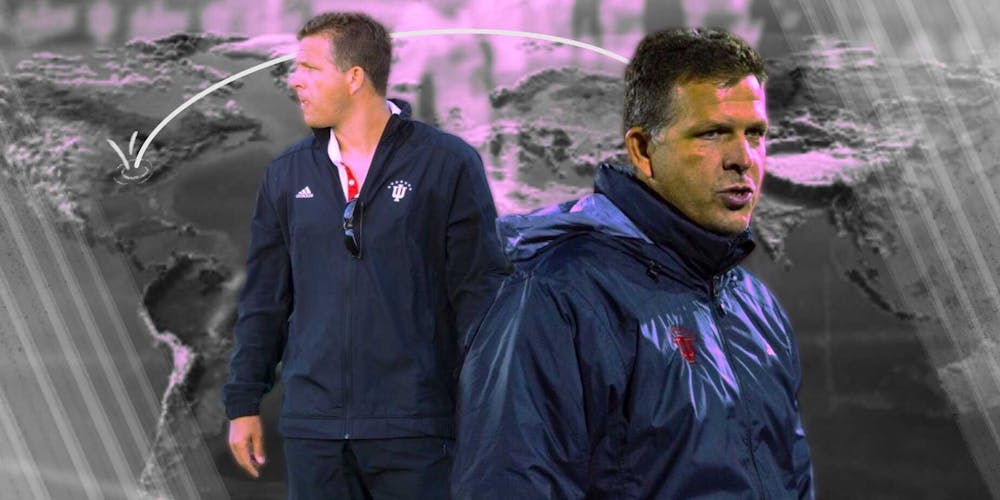Quinten Helmer wanted to play college soccer in the United States. IU men’s soccer head coach Todd Yeagley wanted Helmer to play for him.
So in early 2019, Yeagley and assistant coach Kevin Robson got on a plane, flew to Amsterdam and recruited him to IU. The sophomore Dutch midfielder joined the Hoosiers and redshirted the 2019 season.
He was one of 330 first-year international athletes to play Division I men’s soccer, the highest number in all men’s Division I and third-highest by percentage, behind tennis and hockey.
According to an NCAA report released in August 2020, men’s soccer saw a steady growth of international participation from 2014 to 2019, rising from 24.4% to 35.1%.
Recruiting international players is becoming a steady, and common, trend in collegiate soccer. IU, however, remains the outlier.
“We want to have an identity that relates to the culture and what IU is, and it's obviously a predominantly Midwest school,” Yeagley said.
Helmer was the only international player on the Hoosiers’ roster in 2020. In fact, other than Helmer, only three players came from states other than Indiana, Illinois, Ohio or Missouri. Two hail from Pennsylvania and one, sophomore forward Herbert Endeley, comes from Minnesota.
“Like our student body, we have kids from the outlying areas in our recruiting, so we’ll have a couple from the coast here and there, and then sprinkle one or two internationals,” Yeagley said. “You look at it and you're kind of like, ‘That kind of looks like IU.’”
Yeagley said IU is lucky in their ability to recruit top American talent, so he prefers to start searching for players there.
When the Hoosiers do go overseas, the ability to have relationships with coaches is key. Domestically, it’s how IU recruits the Midwest so well. Junior goalkeeper Roman Celentano came from the same academy as Josh Penn, who was named to the Big Ten All-Freshman team before being drafted by Inter Miami of the MLS.
It works the same way internationally, despite IU spending less time recruiting overseas. Those types of connections are how IU came in contact with Helmer.
Schools are also risking more by choosing to recruit an international player. They’ll often have less opportunities to watch the athlete play and have to decide how he will acclimate to the lifestyle change.
Robson said the decision to redshirt Helmer had as much to do with providing him that chance to acclimate as it was about playing time.
“It took him a little bit of time to adapt to the American game,” Robson said. Sometimes that happens with international players. He needed some time in that 2019 year.”
Compared to IU’s largely domestic roster, IU’s national championship foe, Marshall University, relied on international players, with 24 of 47 players on the roster being from outside the U.S. The starting lineup that won that national championship game was composed of 10 international players and one defender from West Virginia, then-junior Collin Mocyunas, who played with the Arsenal FC U19 team in London.
But IU’s formula works. Three College Cup appearances in four years, including two trips to the national championship, show IU is successful despite bucking the trend, knocking off teams built on international talent, like the University of Pittsburgh and St. Francis College.
IU has fallen short in recent years and hasn't won a national title since 2012. But its 8 championships are the most by any team since 1973.
“We really have a clear formula, a clear identity of what we’re looking for in an IU player,” Robson said.


